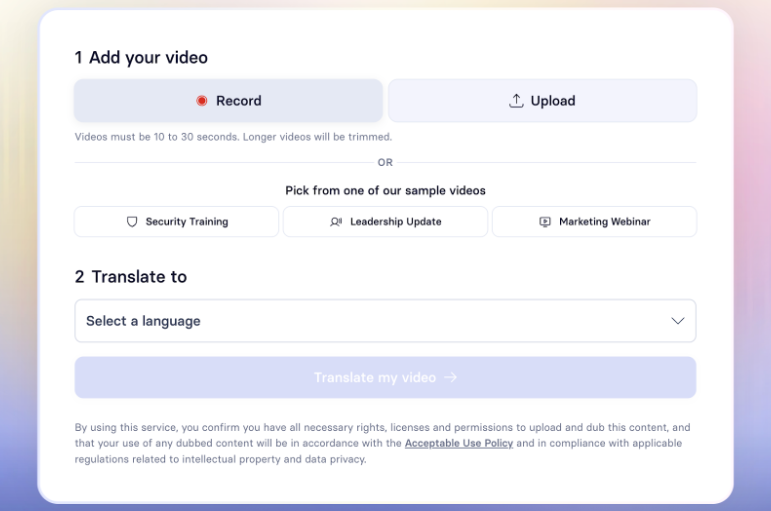文章探讨了构建安全且可扩展的Web应用的重要性,强调了微服务架构、无状态设计和模块化等核心原则,并介绍了云服务、自动化和未来增长设计等基础设施策略。同时,文章详细阐述了API安全、数据库保护和身份验证等安全性最佳实践,并提供了负责任的扩展方法以确保长期性能和可靠性。 2025-10-2 14:11:49 Author: securityboulevard.com(查看原文) 阅读量:0 收藏
In a time where modern web applications are flourishing, it’s increasingly important to ensure that security and scalability are always present.
From growing users online nowadays to complex digital environments that increase the chances of cyber threats. It’s essential that your web application not only scales with you but does so securely.
With that being said, ignoring security and scalability proves highly problematic. An app that does well on the market needs to be able to handle user load, protect sensitive data, while also maintaining performance. It must also be able to adapt to evolving security risks.
Creating a web application is equally challenging, considering that just 0.5% of mobile apps actually find success.
In this guide, you’ll learn all about how to build a secure and scalable web application. From identifying the foundations of scalability to implementing security practices at every stage of the web app development.

Identifying the Foundations of Scalability
In order to create a strong web application, its foundations need to be just right. There are core architecture principles that should be considered. These include:
-
Microservices Architecture – Helps to break down the application into small services, scaling specific components rather than the entire application itself.
-
Statelessness – Designing the application so each request is independent of the previous one. Enables the handling of increasing user loads and resilience in scaling.
-
Modularity – Divide your application into smaller and more distinct modules, which are then developed, deployed, and scaled independently.
As well as the core architectural principles to consider, you also have the infrastructure and development to consider. What strategy will likely work best to focus on both security and stability?
Cloud services are a popular choice for web app developers, leveraging platforms like Google Cloud and AWS for their managed infrastructure capabilities.
However, one of the primary trade-offs that comes with cloud computing is data security and privacy. Storing valuable and sensitive data in the cloud means entrusting it to a third-party service provider. Another downside is that it relies fully on the internet, meaning if the internet goes down, so does your app.
Accessibility is important, too, making sure you’re catering to more of your potential audience to maximize your success on the market. That’s why using tools like Synthesia’s YouTube video translator helps to create content within your application that’s accessible to everyone.
Automation is also something to consider with a development strategy, as this helps to automate testing and deployments, which increases speed, consistency, and minimizes errors. However, automation has its drawbacks and potential problems, such as its lack of nuanced creativity or strategic thinking.
When designing a web app, you want to design with future growth in mind. It’s much more than just designing for an immediate need. You should be looking into the app’s longevity and return on investment. Being able to anticipate future demands helps to avoid any costly expenses and overhauls later on.

Implementing Security Best Practices in Every Layer
When developing web applications, security should be thought about at every touchpoint and layer of the software. So let’s dive into implementing these security features and the best practices to use.
Securing your APIs
A multi-layered strategy is required when developing a web application. Robust APIs, authentication systems, and databases are helpful to have. Strong authentication methods that enforce strict access control. APIs are a frequent target for attackers, which is why security for your APIs needs to be done from the very beginning.
Multi-factor authentication is often used to keep user information secure by requiring users to provide multiple forms of verification before accessing their accounts. API Gateways are also useful when it comes to enforcing authentication, authorization, and rate-limiting policies.
Securing databases
A vulnerable database will end up being compromised and leading to data breaches. For a lot of businesses, this is hard to recover from, if at all. That’s why you want to secure the databases that will contain all the user information, a lot of which may be sensitive and confidential.
Hardened configuration when it comes to configuring your database server. Using default configurations makes you more vulnerable to a breach. Regular back-ups also help keep your database secure, and also get files and data recovered if they’re lost or compromised.
Encrypting data is again a good way to keep anyone from gaining access to this information. It also provides an additional layer of protection. Be sure to log and monitor all database interactions, particularly for any unauthorized or unusual access attempts.
Securing authentication systems
The authentication system itself, which helps defend your web application from harm, should be robust and protect user credentials as effectively as possible.
With that in mind, it’s good to use strong hashing algorithms. Never store passwords in plain text and instead use a one-way password hashing function to help secure user passwords effectively.
Multi-factor authentication (MFA) should be mandatory to prevent any unauthorized access from otherwise stolen credentials. One survey found that 95% of employees using MFA do so via a software program like a mobile app. Therefore, it’s clear that many web applications are already utilizing this feature.
Account recovery should also be secure, designing a secure password recovery process. Consider using token expiration and email validation instead of sending an old password via email.
There should also be rate limiting on login attempts, as this prevents brute-force and credential-stuffing attacks.
Finally, it’s good to audit and regularly monitor user access, making sure to detect and respond to any potential threats.
Scaling Responsibly: Monitoring, Performance Optimisation, & Maintaining Reliability
In order for your web application to perform well in the long term, making it scalable is essential. However, it should be done responsibly. Let’s take a look at how your web application is developed for responsible scaling.
The use of monitoring tools is helpful to detect those bottlenecks that users are struggling with. It helps to gather real-time data to establish the app’s performance baselines.

By using advanced techniques through the use of predictive analytics, your IT teams are able to make changes to avoid future problems. These issues are therefore addressed before they impact users or cause system-wide failure.
There are a number of strategies when it comes to caching, load balancing, and database optimization that are influential in creating a reliable application.
Addressing different parts of the application helps to maximize throughput while minimizing latency. This is done in several ways, including:
-
Establishing performance baselines
-
Real-time tracking and threshold alerting
-
Anomaly and pattern detection
-
Predictive analytics
-
End-to-end visibility
When building a secure and scalable web application, it’s beneficial to scale it at the right time, rather than being too early or too late. Scaling either way is risky when it comes to web development, each end posing different threats to how successful the application will ultimately be.
Scaling too early leads to financial strain. While you might think the market is there for such demand, there are a lot of costs that come with large-scale architecture, hiring teams, and purchasing servers. If the market ends up not being what you predicted, then you could be left in the red.
At the opposite end, scaling too late results in web applications that are unable to keep up with the sudden surge or unexpected increase in traffic to their digital doors. So if your application were to go viral, you might be in trouble.
Common Pitfalls and How to Avoid Them
There are common pitfalls that occur when developing a secure and scalable web application. Knowing what these are certainly helps you avoid them when developing your own app.
Over-engineering the security layer and slowing down development
Over-engineering the web application’s security layer causes the development to slow down. While it’s important to spend time on securing your web application, spending too much time on its engineering will negatively impact performance and introduce delays.
Ignoring compliance and regulatory requirements
If you’re not paying attention to compliance and regulatory requirements when developing a web app, it could result in several financial, legal, and operational fallouts.
The consequences of ignoring compliance and regulatory requirements could include the following:
Major fines and fees
Non-compliance with data protection laws results in devastating financial penalties that could be hard to recover from.
Legal action and lawsuits
Legal action could be taken against you if regulatory bodies discover you’ve broken regulatory requirements. From initiating proceedings to placing restrictions on business operations. Individuals and businesses in general could find themselves at the receiving end of a class-action lawsuit.
Build a secure and scalable web application to maximize its potential success
You must be doing everything to enhance your web application’s security and scalability potential. There are many touchpoints in the process where security is implemented and where you are able to accurately provide scalability for your application to those businesses that need it.
Developers and businesses alike should take a proactive approach when it comes to building web applications. An evolving tool ecosystem and knowledge of how to implement both security features and scalability principles will help give your app the best chance of success.
*** This is a Security Bloggers Network syndicated blog from SSOJet - Enterprise SSO & Identity Solutions authored by SSOJet - Enterprise SSO & Identity Solutions. Read the original post at: https://ssojet.com/blog/secure-scalable-web-applications-guide
如有侵权请联系:admin#unsafe.sh
